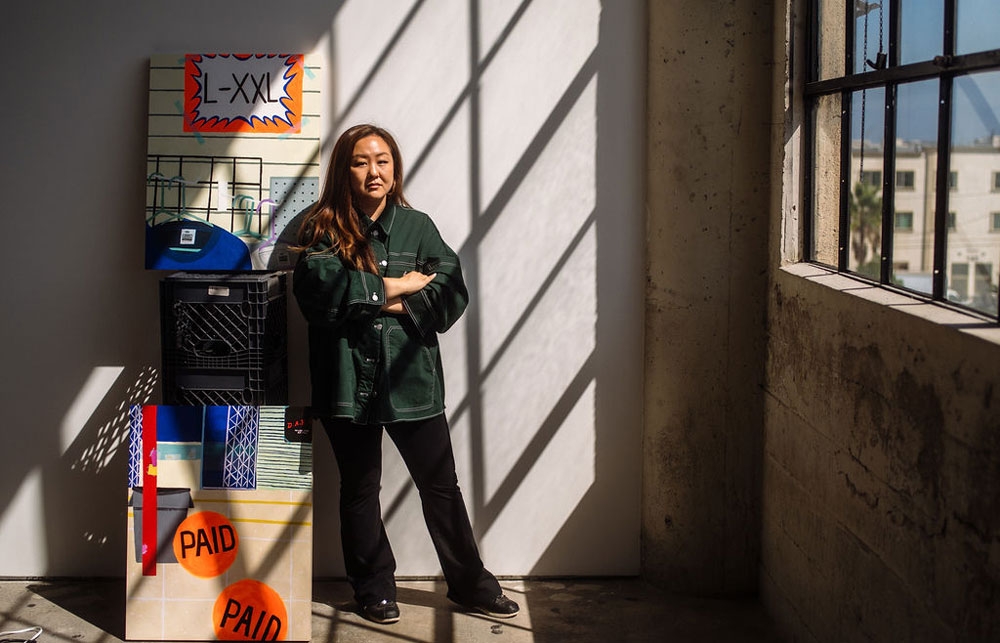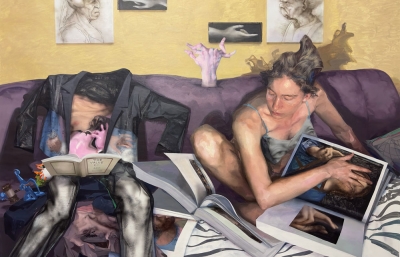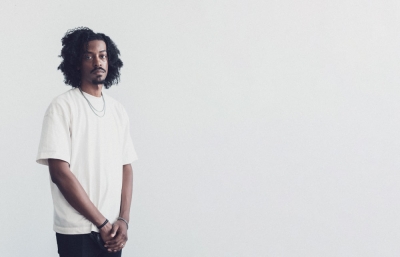The range of colors and seemingly spontaneous composition of your subjects often project incredible play and joy, especially at an initial glance. But under the surface, there are cracks uncovering another side that often challenges working-class communities. Can you speak to some of these metaphorical cracks in your work?
I paint with playful, neon colors to show how I perceived my world at the swap meet as a child. I’m sure I would see it much differently now as an adult, but when I was young, it was a massive retail fun zone filled with toys and endless randomness. I loved playing with the neon stickers and placing them over everything. I was a creative child, so I was lucky to be surrounded by so much art and visual stimulation.
But you are correct, there is definitely an underlying crack and pain behind the work. Often you will see open ramen or coffee—this was to show that our parents were always on their feet, never having the time to finish a meal or cup of coffee in one sitting. The ramen got stale and the coffee got cold because they often neglected themselves to stay available for others. Every moment was utilized to attract customers and make a sale, simply because our lives depended on it.
Experiencing this made me really want to highlight their work ethic and dedication in my paintings. A cooking pot in the middle of a swap meet setting, for example, embodies the frugal mentality of my immigrant parents who would rather bring a portable burner, pot, and ingredients to work rather than leave and buy lunch. But I also think this was a way for them to eat Korean food and feel a sense of comfort for just a few minutes at work.
The Tiger Balm ointment next to the cash register in a recent painting shows how my parents, like many immigrant parents, were always on their feet and had to endure quite a lot of physical pain. My mom would use tiger balm for temporary relief on her tired legs. Tiger Balm, a common remedy for Asian people, is like Icy Hot, but hotter and icier. I painted the space behind the gates with a cool and minty blue color to visually describe the intense smell of the tiger balm. I love using color to trigger another sense. You could smell it from a mile away, and the smell of the ointment will always remind me of my parents' hard work.
I really enjoyed hearing about your own story as a child growing up with a strong Korean mother who owned a deli in NY in the ’80 and ’90s. I know there are many second-generation kids like us who share similar experiences: balancing being a kid while being exposed to adult responsibilities at an early age because sometimes being children of immigrants means we are forced to become translators or cultural teachers! But these are the experiences that fuel my passion for my work.












